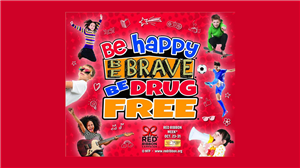OCTOBER EVENTS
Red Ribbon Week (October 26-October 30, 2020) “Be Happy, Be Brave, Be Drug Free”

Please help your child celebrate Red Ribbon Week by participating in daily themes to promote the spirit of making choices that will lead to a healthy and happy future.
Monday, 10/26/2020: All students and faculty are encouraged to wear Red to start Red Ribbon Week celebration.
Tuesday, 10/27/2020: Happy, Brave and Free from Head to Toe! Wear Crazy Hair and Silly Socks.
Wednesday, 10/28/2020: Happy, brave and free! What storybook character will you be? All students and faculty are encouraged to dress up as their favorite storybook character, or wear story book character apparel.
Thursday, 10/29/2020: Wacky Tacky Thursday! Wear your Wackiest, Tackiest Outfit.
Friday, 10/30/2020: Happy, brave and free! What storybook character will you be? All students and faculty are encouraged to dress up as their favorite storybook character, or wear story book character apparel.
Internet Safety presentations for Grades K-4 (October 19-October 23, 2020)
STOP.THINK.CONNECT. PARENT AND EDUCATOR RESOURCES

Internet Safety: Week of October 19, 2020 - Students will be presented with Lessons by Mrs. Carranza, School Social Worker, and Ms. Appel, Computer teacher on Internet safety throughout the week.

Pacer's National Bullying Prevention Center- What Parents Should Know About Bullying
Pacer's National Bullying Prevention Month - Kids Against Bullying

















